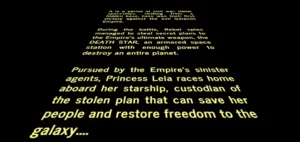Posts by Dave King
Ruth and I are currently binging Grey’s Anatomy – centered around a group of surgeons at a fictional Seattle hospital — and enjoying it for all sorts of reasons. (Bailey is brilliant.) Remarkably, the show is still fresh and original after nineteen seasons. Most shows, even the best, rarely last more than five or six without falling apart – the phrase “Jumping the Shark” comes from the episode in the fifth season of Happy Days when the show crossed a line there was no coming back from.
Why should writers be interested in a television show? Writing and screenwriting have different tropes, techniques, and expectations. And Gray’s Anatomy has regularly replaced cast members, a technique that also helped other longrunning shows, (MASH or the Law and Order franchise) stay fresh. Writers can’t exactly introduce new characters mid-novel.
Still, many Gray’s Anatomy characters last for a decade or more without becoming repetitive or ridiculous, and three of them – Meredith, Bailey, and Weber – have been there since the beginning. These characters stay interesting because they are developed to a depth that writers can only envy – and learn from. I’d like to focus on one in particular, Dr. Alex Kaerv, played for sixteen seasons by Justin Chambers. I think it goes without saying, but spoilers abound.
Writers know their heroes have to be flawed and their villains have to be sympathetic. They also know that characters need to grow, to overcome difficulties in the course of the story. The go-to trope for all of this is a troubled childhood — sensibly enough, since this is where a lot of character problems have their roots in real life.
Alex grew up with a drug-addicted father who abandoned the family when his mother developed schizophrenia. While Alex was still a child, he had to not only care for his younger brother and sister, he had to make sure his mother took her meds — too many responsibilities way too young. He kept his situation secret out of shame, which prevented him from forming friendships outside the family. He eventually wound up in foster homes – and getting thrown out of foster homes – before finally going to med school on a wrestling scholarship. This all left him angry and emotionally stunted, with a willingness to lash out and step over others to get what he wanted. So much so that in season one, Cristina Yang dubs him “Evil Spawn.”
Alex eventually overcomes a lot of this damage in ways writers might be familiar with. When his brother comes to him for medical help, he reveals a lot of Alex’s history, something Alex kept hidden out of habit. Yet his fellow residents don’t hold him in contempt (or in Cristina’s case, more contempt – she has her own issues). He later brings a patient with psychological problems home with him, to take care of her, much as he cared for his mother. When he’s forced to commit her, he learns that his habit of caring for crazy people has its limits. And when his father shows up at the hospital, Alex is still angry, refusing to see him and later punching him out. When his father returns to the hospital again some time later, Alex manages to reconcile […]
Read MoreThe governor on Bolton and Watt’s steam engine — AI, circa 1788.
When modern steam engines were coming together in the late eighteenth century, one breakthrough feature was the centrifugal governor — two iron balls fastened by a system of hinged rods to a shaft that spun with the engine. As the engine picked up speed, the balls would spin faster and move out from the shaft. This pulled on the hinged rods and closed down the valve that let steam into the engine, slowing the engine down. As the engine slowed, the balls dropped a bit, opening the valve and letting the engine speed up again. This was how the governor automatically kept the engine running at a steady speed.
This was hailed as a breakthrough in artificial intelligence. After all, the machine was controlling itself.
I think about this history when I read dire predictions about how artificial intelligence will put writers out of business. I’m certainly not an expert, but I’ve been following the development of artificial intelligence since I read about SHRDLU in the late seventies. SHRDLU was the first artificial intelligence system able to hold a conversation, though the only thing it could talk about was a very limited artificial world full of colored shapes. (“SHRUDL, where is the green triangle?” “The green triangle is on top of the blue box.”)
From there, we got programs that could sort of chat about other things, such as ELIZA, which mimicked a therapist mostly by using stock phrases, and RACTER, which generated something like a conversation by plugging recently used words into pre-programmed sentence forms. To give you a feel of the state off the art, here’s a brief conversation between ELIZA and RACTER.
eliza: Hello. Please state your problem.
racter: Excellent! Excuse me a minute while I attend to some business. I will be right back.
eliza: Why do you need to tell me excuse while you attend to some business?
racter: Is it better to need or to despise? Why is it that I do need to tell you to excuse myself to attend to some business? Because electrons are brave. Braveness is nice, don’t you think? And the needers all insist upon it. Do you imagine I am a Communist?
Now we have ChatGPT which, admittedly, does better than this. It’s able to roughly understand questions asked, can write entire coherent paragraphs, and, given enough feedback, is able to generate something that can more or less pass for human speech in the dusk with the light behind it.
It’s not going to put writers out of business. ChatGPT and other similar programs work by statistically breaking down huge databases of actual human speech and using the probabilities they calculate to predict the most likely next word in a sentence – autofill on steroids. These programs can also learn by adjusting their probability tables depending on feedback they get. A lot of articles quote AI-generated content that looks self-aware and even pensive, but I suspect these examples are generated by the infinite-number-of-monkeys technique. You don’t see the vast amount of RACTER-like nonsense the AI generates before its bursts of coherence.
AI is handy for writing tasks that don’t require any serious creativity, like computer code or technical papers. Its learning […]
Read MoreOur “blue” tray
Not long ago, Ruth asked me to bring her something, I forget what. I asked if she wanted me to use our blue tray. She said we don’t have a blue tray. What we have is a turquoise tray.
The details we notice from day to day are rooted in our interests, our histories, our sense of what’s important in the world. Ruth grew up with the 64-crayon Crayola box. I was more the basic, eight-crayon set, so she can see colors I’m blind to. To me, puce, magenta, crimson, and terra cotta are all red. And we have a blue tray.
When you’re imagining your characters to life, you’ve got to stay aware of just how much other people see the world differently than you do. As I’ve written before, it’s natural to assume that you’re seeing the world in the only reasonable way there is. You know what’s important and what’s not. It takes some humility to admit that we all have blind spots, that other people see things that we can’t, or won’t. Ruth’s world is more colorful than mine. If I needed to create a character with Ruth’s sense of color – an artist, for instance — I would have to learn to see the difference between scarlet and crimson, teal and robin’s egg. It would be work for me, but it would make my artist a lot more plausible and interesting.
Of course, you can’t be aware of all the nuances of how all of your characters see the world – novels are only so long, and there’s only so much you can imagine. But if you can weave one or two main interests into each character to drive their perception of the world, your story will feel more like it’s populated with real people.
You’ll also be able to create more layered dramatic tension. The most interesting conflicts between characters are the ones rooted deeply in differences between their worldviews – where readers can see both sides, both sides have a point, and each side has good reasons to stick with their position. Conflicts where one side is obviously right and the other obviously wrong just aren’t as interesting.
So how do you develop characters who look at the world so differently? In that earlier article on getting into characters’ heads, I mentioned talking to people who genuinely disagree with you and learning how they see the world, reading well-written books centered on characters who see the world in unique ways, and reading books written in the past, when people thought and worried about different things.
To that, I’d add developing new interests of your own that might expand your own sense of the world.
Decades ago, just for fun, I took an introductory course in Newtonian Mechanics – the science of forces, vectors, and acceleration. While I can’t calculate the angular momentum of a hollow cylinder rolling down a hill any more (the sort of thing we did), when I’m felling a tree for firewood, I can still see where the stresses are, how the weight’s distributed, envision the center of gravity, and guess how the tree will drop. Even that brief introduction to Newton changed how I […]
Read MoreYears ago, I edited a book that centered around a condition called prosopagnosia – you learn the most amazing things as an editor. Apparently, we have a spot in the brain whose only function is to read other people’s faces – the right fusiform gyrus, for those of you keeping score at home. When that spot is damaged from physical trauma, a stroke, or a congenital defect, sufferers can no longer really see faces. They can see and recognize everything else just fine. But faces – of loved ones, longstanding friends, even their own face in the mirror — remain unidentifiable.
I thought about this condition recently when reading a historical mystery by the late Anne Perry. Perry is an excellent writer, with intriguing characters and well-crafted plots. But she also has some stylistic habits that left me itching to pick up a pencil. For instance, she is given to describing her dialogue with forced, awkward adverbs. (“’I don’t know what you expect of me,’ he said exasperatedly.” From Death in the Devil’s Acre.) Another is capturing character emotion by describing faces.
We read faces intuitively, almost automatically. Thanks to the right fusiform gyrus, we can look at someone and just tell if they’re angry, or frustrated, or at peace. And we do it all the time – it’s a routine part of our everyday lives. So it’s kind of natural to try to bring this facial recognition talent into your descriptions.
It’s harder than you might think. When we read someone’s face, we’re picking up on subtle changes in as many as 19 different facial muscles. Slight elevations of the eyebrows, changes to the shape of the mouth, slight flaring of the nostrils. Our brains put all of this together as a gestalt that says, “He’s worried about something,” or, “She’s certainly eager to see someone.”
We don’t have the language to capture these subtle facial changes – most people aren’t even aware these muscles exist. So writers who try to describe faces usually just jump to a description of emotion that most people would be able to read on sight. This habit was how Ms. Perry was annoying me — I’ve pulled these examples from Death with a Double Edge. “Impney met him in the hall, his face expectant.” “Kitteridge’s face creased in puzzlement.” “. . . Charlotte asked, with concern in her face.”
Readers of Self-Editing know that naming an emotion doesn’t put it across. When you tell your readers what your characters are feeling, you’re just giving them information. You don’t just want them to be informed, you want them to share the emotion, and that means letting them picture the face in question and interpret it for themselves. And sometimes this can work, as with this example from Alexander McCall Smith’s The Right Attitude Toward Rain – “She saw the face wrenched up at one side in that disgusting grimace.”
But it takes work to get it right, mostly because there are only so many ways to describe a face. If you fall into the habit of doing it a lot, you’ll most likely wind up recycling your descriptions. I’ve worked with clients whose characters were constantly raising their eyebrows, opening their eyes wide, scowling. Lots of wrinkled foreheads and […]
Read MoreFrom Critters, the 1986 New Line Cinema movie..
I tend to pay attention to serendipity. So when I had two clients run into problems with well-meaning but misguided critiques within a week of each other, I figured I’d found my article for this month.
Of course, I edit for a living, so it’s hard for me to say anything about amateur editors without sounding a little self-serving. I do appreciate the efforts and, generally, the skills that amateur critiquers – critters – bring to the table. Professional editing is expensive, and not all writers are ready to make that kind of investment in their craft. I get that.
But . . .
Most amateur editors are writers themselves – writers trading editing back and forth is how critique groups work. This means they have their own preferred ways of crafting a plot, their own pet set of techniques for creating character, their own sense of what makes a story work. In trying to get your story to work, they often wind up telling you to write the story they would have written.
For instance (I’m using my clients as examples with their permission, by the way), one of the characters in one client’s work was a teenager who was raised by an incredibly abusive stepparent. We’re talking routine physical torture and threatening to kill the teens’ friends and random innocent strangers in order to compel obedience. The teenager spends much of the book fighting back despite the deep-seated psychological damage this upbringing left behind. He’s not always successful. He’s forced to keep key facts secret, even though the secrecy risks the lives of other characters. His attempts to fight back lead to two more characters getting killed. A poor decision leads to yet another character’s death. He himself lashes out at one point and kills someone who’s hunting him.
Some of my client’s critters found all of this too dark. One said the teenager’s “kill count was too high.” Others found it despicable that he kept secrets despite the risk to his friends. And, yes, judgements like these are a matter of taste. Some people prefer a lighter book with less fraught characters, and that’s fine.
But that’s not the book my client was trying to write. One of her main dramatic threads centered on the power struggle between the teenager and his stepfather. Lightening up on the stepfather’s threats would have robbed that thread of its drama. Keeping the father’s torture and coercion without having it twist the teenager’s personality would have been unrealistic. The darkness was at the core of their relationship and of the teen’s struggle through the story. My client couldn’t change it without writing a different sort of book.
A professional editor probably wouldn’t have made this mistake. Over my four decades in the business, I’ve helped writers who had a lot of different approaches to storytelling, so I’m not locked into one in particular. And that enables me – and other professional editors — to see the story a client is trying to write and help them to write it more effectively.
My other client ran into a problem that shows up with amateur and professional editors both – being told to tailor his story to […]
Read MoreLast month, we looked at what prologues can accomplish. This month, let’s look at how they go off the rails.
As often happens, the comments section last month raised enough issues to make up another column, and I’ll be drawing from those comments extensively. Think of this article as being crowdsourced. And thank you Don, Barbara, Joyce, David and all the rest for sharing your experience as readers, agents, and editors.
Ironically, the reasons prologues fail are the flip side of why they succeed. For instance, I’d mentioned that you can use a prologue to give your readers background that’s tricky to work into the main story, either because it involves something that happened in the past or at a faraway location or to someone other than your main character.
But writers, especially beginning writers, have a hard time judging how much background they need to include. Delving into the history of your characters is a wonderful way to get to know who they are and what drives them. It’s only natural to feel your readers need to get to know them the same way. So you slow the story down with backstory your readers don’t really need. And a fair amount of that padding shows up in prologues.
If you’re fond of prologues (and judging from the response last month, a lot of you are) give yours a critical look. Do readers really need to know what you’re telling them? Do they need to know it before the story begins? Remember, they don’t know what’s coming, so they won’t see the information in context the way you do. They’re also willing to cut you some slack at the beginning of your story — they don’t need to know all the background nuances before they get hooked. So check how your story reads without the prologue. It may be able to stand on its own.
I’d mentioned that prologues can foreshadow a tense moment from later in the story to let readers know what’s coming. These “menace” prologues (in Don’s term) often run aground for the same reason overly tense opening scenes do. Writing coaches and courses hammer home the idea that you need a dramatic first five pages (or first page, or first paragraph). In trying for the dramatic launch, a lot of writers wind up with an opening scene that doesn’t connect to the rest of the story. The first five pages are full of action and conflict, then page six settles down to mundane storytelling. Calling those first five pages a prologue doesn’t necessarily help. In fact, as Don points out, a tense prologue can take the storytelling pressure off of chapter one, giving it room to be even more bland.
Also bear in mind that your moment of tension, like the glimpse of a character’s past, hits your readers without context. The thing that gives conflict its power is that readers know and care about your characters — they know what’s at stake. Too many opening “menace” prologues ask readers to care about conflict involving people they don’t know yet. Even if your story eventually turns dangerous, you might be better off with an opening chapter that makes your readers love your characters than a prologue […]
Read MoreOne of the more famous prologues, courtesy of Star Wars.
I’m all for retiring outdated storytelling techniques. I don’t miss the puzzle mysteries of the teens and twenties, where the characters were little more than props in complicated, contrived, often implausible mysteries. Second person narration died with Bright Lights, Big City, and that’s fine. And, naturally, a lot fewer people are writing epistolary novels now that a lot fewer people are writing epistles.
But it’s too soon to give up on prologues, as a recent client wanted to do. He had a storytelling situation – a bit of critical action that took place well before the main story started – that cried out for one. But he’d heard (probably from Elmore Leonard, who made this a rule) that prologues were forbidden. So he took what was really a prologue and labeled it Chapter 1. And my client’s not alone in this. The first chapter of Harry Potter and the Sorcerer’s Stone is essentially a mislabeled prologue.
There’s a reason writers sneak prologues into their stories under other names – they’re incredibly handy. They’re essentially a separate, free-floating, storytelling bubble that lets you show your readers some critical information or character background that you can’t work into the main story. Most often, this involves one isolated scene that happened in the past – as with the opening chapter of the Harry Potter book.
It may be that what you need to show your readers involves a very minor character. If you weave them into the story, readers are going to assume they’re more important than they are. Or, if your story is focused on one particular perspective – if the whole story is told from the point of view of a single character, for instance, or within a single setting – the set-apart nature of prologues lets you give your readers a glimpse outside that perspective.
You can also use prologues to whet your readers appetite for the main story. Years ago, I worked on a mystery that had to establish a lot of motivations and interconnections before the first body dropped. So the author put the discovery of the body at the bottom of a cliff in a prologue. This let readers know what was coming, and because he didn’t reveal the identity of the body, and because there were several possible candidates for being tossed off a cliff, readers were kept on edge until the story caught up with the prologue.
Prologues are a good place to introduce a frame story, either an older version of the narrator looking back on the main story or some outside investigator explaining how they got involved. Frame stories are another outdated technique that can still prove useful for giving a story verisimilitude or a different perspective. They’re especially effective when followed up by an epilogue.
Finally, that separate storytelling bubble is a good place to introduce your readers to your characters apart from the rush and flow of the story. Dick Francis does this well in Whip Hand, were we meet the main character, former jockey Sid Halley, when he has a dream of racing, then wakes to the crushing memory that he will never race again. We still […]
Read MoreThe 1501 Aldine edition of Virgil’s Aeneid, the first use of italics in print.
I try to not write much here about the mechanics of writing, such as how and when to use italics. I’m most interested in opening writers’ eyes to subtleties of the storytelling craft that they might not have noticed. There aren’t a lot of subtleties involved in how you use italics. It’s all pretty straightforward.
But after last month’s Onconference talk on dialogue, I could see there was still a lot of confusion about how and when to use italics. I think I need to step up.
First – and I can’t stress how important this is – there are no rules, not even with purely mechanical matters. When you try to handle italics by rote without paying attention to what’s happening in your story, you’re putting the rules ahead of the story. But if you treat italics as tools that, used properly. can help you tell your story more effectively, then your story is at the center of your thinking, where it belongs. So what can italics do for you?
First, your goal is to keep your mechanics transparent. As soon as readers notice how you’re telling your story, they’re no longer paying attention to your story. Which is bad. So however you use italics, you don’t want them to jump out at your readers.
What italics do best is mark some passage of dialogue or interior monologue as separate. The most common use – and the most misunderstood – is with interior monologue. Some clients have taken it as a given that all interior monologue should be in italics. The problem is that, when you mark off the interior monologue, then you’re saying that your narrative voice – the one you use for descriptions – is different from the viewpoint character’s voice – which is where interior monologue comes from. You’re putting distance between your narrator and your character.
Sometimes this is what you want – did I mention there are no rules? But more often than not, you want to forge an emotional bond between your readers and your characters. The best way to do that is to make your readers feel they’re seeing the action through the eyes of your viewpoint character. And the best way to do that is to let your readers move from what your character sees to what they think about it and back again without tripping over a change in typeface. Just keep the interior monologue in normal type and in the same tense and person as your descriptions – what’s true of italics for interior monologue is also true of a shift from past to present tense or from third to first person.
Another exception to this general principle? Italics can be handy to mark when your interior monologue is more like a dialogue. If a character is debating whether or not to do something, you can sometimes show that internal debate by putting one side of it in italics. If a character is praying a silent prayer, italics can be the way to go. And you can also use italics for something more unusual – say, telepathic communication or […]
Read More
In “Happy to Be Here,” Garrison Keillor tells how, when he started out, he hoped to write a novel every two years.
To facilitate this outpouring of the spirit, I had trained myself to think the novel, mentally narrating passages of my daily life in fictional fashion. . . . When the telephone rang, I’d think, “He hesitated inwardly – a barely perceptible moment of doubt that, as his fingers touched the cold metal, was overcome by his need to talk with someone, even a complete stranger.” I turned my life into one long interior monologue, putting myself through the wringer in order to make my novels more realistic than my own life happened to be at the time in comparison to novels I had read.
Clearly you can pay way too much attention to your characters’ inner lives. But how much is enough? When do your characters come across as flat or mystifying because your readers have no idea what’s going on inside them? When are you indulging in so much self-reflection that, as Keillor put it a little later, you’re motivating your characters right into the ground? How do you tell the difference?
One thing to watch for when you’re deciding how much to dwell on your characters’ inner life is, what’s your story about? What’s the conflict that you resolve at the end? If you’re going for straightforward action, something that resolves because of things your characters do, then you don’t have to pay quite as much attention to what’s going on inside their heads. In fact, too much internal life can cost you momentum at key moments. James Patterson’s characters go pages, sometimes chapters, without any reflective interior monologue, which is one reason his stories flow right along.
Read MoreRuth was reading an old Susan Howatch novel on her Kindle, which tracks the percentage of the book you’ve read without bothering about page numbers. After reading for a few days, she noticed that she hadn’t made much of a dent on the percentage. I asked the internet and found that the paperback of the novel had been more than 1100 pages long.
I’ve always argued that a manuscript should be as long as it needs to be to tell its story. A lot of successful books – Jonathan Livingston Seagull, or The Bridges of Madison County spring to mind – are not much more than novella length. The Lord of the Rings, broken into three books but really a single, continuous story, clocks in at 1086 pages, not including the appendices. None of them feel too short or too long.
Besides, trying to force your story to fit a predetermined page count because you think that’s what the market demands is almost always a recipe for disaster. Adding or cutting material just for the sake of adjusting the length leads to either in gaps in the narrative or padding that drags the story down. This is not to say that all first drafts are the right length out of the gate. Sometimes stories do drag and need trimming to flow better. Others are too thin and need subplots built up or more details on the characters’ internal lives. But these are changes made for the sake of getting the story right, not to fit the market.
So how do you know whether your odd-length manuscript is just what it needs to be or is too bloated or anemic? Successful novella-length novels usually succeed because they are centered around a character development or story point that didn’t need a lot of pages to convey but that carries the emotional weight of a full-length novel. Readers can finish them quickly and not feel underfed.
I’ve written before about Ted Chiang’s “Story of Your Life,” the novella on which the movie “Arrival” was based. In the story, Chiang gives a sense of what it would feel like to experience time all at once rather than in linear sequence – and only reveals that that’s what he’s doing at the end of the story. That’s enough masterful storytelling for a novel, but adding more material would have distracted from the central point. It is a short book that still feels like a long book.
Extremely long novels also have a couple of features that make readers willing to put up with four-digit page counts. The Lord of the Rings creates a complex world with several independent cultures and thousands of years of backstory. It takes time to get all that across. The same is true of massive, multigenerational works, like the Susan Howatch book Ruth was reading.
Long novels often work two or more different complex threads at once – effectively telling a single story through several different, interwoven novels. After The Fellowship of the Ring, Tolkien’s narrative splits up into at least three threads – Frodo, Sam, and Gollum making their way into Mordor, Pippin and Merry rousing the Ents, and Aragorn heading down to defend Gondor. These threads cross occasionally and come […]
Read MoreCredit: NASA/JPL-Caltech
It’s hard enough to create a single fictional world, one that’s internally consistent, gives your readers enough details to feel they’re actually there, and gives a dramatic background for your story. This is why, when you’re creating a world different from the one we all share – in historical novels, fantasies, science fiction – you tend to only create the one world.
Thing is, what your world is like depends on who’s looking at it. All of us filter what we see through our own experiences and prejudices. We assume some things are true and tend to see them whether they’re there or not. The world of someone who’s survived childhood abuse is a much scarier place than most of us know. So the way to create a fictional world is to get so deeply into your main character’s head that you make your readers see the world as they see it. As I say, it’s hard enough to do once.
What if you could do it several times?
Many years ago – long enough that I’ve forgotten the author’s name — I edited a manuscript about a land dispute on a Navajo reservation – a sacred site was going to be developed, and people were upset about it. The story started out with a scene from inside the head of an old Navajo woman whose grandfather had settled the land. She was up against Bureau of Indian Affairs lawyer and the Hopi Sheriff who was helping him. Through her eyes, readers saw the Sheriff as a sellout and the BIA lawyer as a burned-out bureaucrat who didn’t care about the people he was supposed to be helping.
The next scene was from the point of view of the Hopi Sheriff, whose grandfather had lived on the land until the Navajo woman’s grandfather had taken it away from him. He saw her as a self-righteous troublemaker who didn’t know the history of her own people. He also saw the BIA lawyer as a cynical bureaucrat.
Then you got into the BIA lawyer’s head and found out that he joined the Bureau because he wanted to do some good in the world. But he didn’t have the budget or the resources he needed, and found that both sides of the dispute he was trying to negotiate hated him. And so it went. Every new character whose head you entered had a distinct take on the same situation.
So why would you want to put in the effort of changing your readers’ perceptions with every new point of view?
It can make for better drama, for one thing. You can draw readers into your story with a conflict where one person’s right and the other is wrong. But where both sides have a point, the drama moves to a deeper level. Readers aren’t simply worried about who will win. They’re worried about who they want to win.
You can also work conflict into your story by putting two worlds on collision course.
Elizabeth Cadell’s The Fledgling tells the story of Tory, a young girl, raised by aged maiden aunts in Portugal, who is going to a boarding school in England. Her father has arranged for a chaperone, Mr. Darlan, for the train trip. […]
Read MoreLast month, I wrote about how hard it is to write morally good characters. In the comments, it came up that writing evil characters can be just as hard, though for different reasons.
Evil characters can be easy to write because they’re often more clearly aware of their intentions than good ones. But to write believable evil characters, you have to get inside their minds. Anyone who gives advice on writing will tell you that you have to humanize your bad guys for them to be effective — cartoon evil is no more interesting than cartoon good. But writers also need a warning about just how painful it can be to enter an evil mind.
A lot of writers try to dodge the question by just giving their villains the standard abusive childhood – as if no bad guy ever came from a happy home. Some avoid ever writing from their villain’s point of view, keeping their evil at a distance. But to really make an evil character effective and memorable, you need to enter their worldview and see life as they see it.
Many evil people don’t think of themselves as evil. So one way to get into the minds of some villains is to try to see why they feel that what they are doing is good. They’re hurting people and destroying lives, but it’s for the greater good. They might have to commit murder, but it’s to save even more people. This sense of their own righteousness doesn’t necessarily excuse their actions – it could be massive self-delusion. But it does give you a way to get into the head of someone actively causing pain. To paraphrase C. S. Lewis, people who hurt you for their own pleasure are far less dangerous than people who hurt you for your own good.
Some evil characters know that what they’re doing is evil, but they didn’t set out to do it. They simply started with some minor, easily excused infraction that just snowballs. An embezzler lifts a few thousand dollars from a work account to cover a debt, then has to falsify tax records when it isn’t paid back in time. And then has to throw blame on a co-worker and perhaps embezzle more to escape, or even kill the auditor who discovered the grift. Again, this is not an excuse – at any point in the sequence, the villain could have bowed out. But following a character through a series of bad decisions, each one building on the last, each one harder to justify, can actually be a good source of tension.
Some people are, though, simply evil, and those heads are the hardest to get into. Seeing the world from inside the head of someone who delights in destruction can only be done if you put aside your own humanity. It can be wrenching and exhausting. It doesn’t matter. Do it anyway. Just give yourself to it.
There is certainly room in the world for light, gentle, hopeful books. But to write books that show readers a harsher, grittier reality often means you have to stare evil squarely in the face, understand it, even accept it at some level. Many writers don’t have the courage. I often […]
Read MoreAs I was working on this article, news came of Russia’s deliberate bombing of a train station full of refugees, mostly women and children, trying to escape the shelling in eastern Ukraine. That vile act added some urgency to the topic I was writing about – the problem that evil is often easier to write than goodness.
Evil people make the deliberate decision to be bad and often take delight in doing harm. Goodness is less self-conscious, almost by definition. A lot of good people never think of themselves as good – they don’t let their left hand know what their right hand is doing. In fact, good people are often good because they have doubts or fears and do the right thing in spite of them. Evil is simple. Good is complex. Complex is harder to write.
What makes it even harder is that, to write goodness effectively, you have to be a good person yourself – to face your own doubts or fears and yet have the internal drive to do the generous, self-sacrificing, loving thing. A lot of more ordinary writers, faced with writing good people, fall back on a less challenging alternative. Writing about faith.
While working on a recent client’s memoir, I noticed something odd. When he was writing about his psychological struggles or talking about a tough childhood, he was moving and personal. When he switched to talking about his beliefs and practices, suddenly he was all shallow platitudes. To be fair, his faith may have been as real as the rest of his life, but that’s not how it came across.
Ideally, faith and goodness should be related. Sadly, that’s not always the case. And religious practice offers writers a ready-made language to signal goodness without exploring it.
For most people, beliefs are shaped and supported by an often tight-knit faith community. Like any other relatively closed group, these communities tend to develop their own shorthand for talking about complex, familiar concepts. For those who simply want to create a sense of goodness on the cheap, it’s far too easy to turn to these virtue signals.
The problem is, for someone outside the in crowd, the shorthand usually comes across as shallow and meaningless. It can actually cheapen the whole idea of faith for outsiders. And it does nothing to convey actual goodness.
So whether you’re writing about your own beliefs or a character’s, pull back a bit and ask yourself how much of the language you’re using is only heard among other believers. If the answer is “most of it,” focus instead on your actual experiences, what they feel like and how they affect you. If you stay aware of your own experience as you write, then you can probably pull your writing away from empty professions of faith and move toward the authentic faith that engenders goodness.
It wouldn’t hurt to ask a skeptic to read the passages about faith and give you some feedback. Remember, you’re not just writing for people who agree with you. You’re not even writing to convince people who disagree with you. You’re conveying your experiences, either in a memoir or through your characters. Even if skeptics remain unconvinced, if you’re writing in clear, authentic terms, they will at least empathize. And readers who […]
Read MorePurple prose, it’s the bane of a writer’s existence. Like a noisome stench pulled from the depths of perdition, it infects their prose, tearing at the very fiber of literary excellence, rending joint from sinew —
Um . . . sorry.
Purple prose, meaning writing so overblown that it interferes with the storytelling, has evidently been a problem for a long time. We first heard the term in Horace’s Poetic Arts, written more than 2000 years ago.
Weighty openings and grand declarations often
Have one or two purple patches tacked on, that gleam
Far and wide, when Diana’s grove and her altar,
The winding stream hastening through lovely fields,
Or the river Rhine, or the rainbow’s being described.
There’s no place for them here. Perhaps you know how
To draw a cypress tree: so what, if you’ve been given
Money to paint a sailor plunging from a shipwreck
In despair?
Last month, I cut some of the purple out of a passage from Elizabeth George’s latest mystery, Something to Hide. One commenter complained that I was draining the writing of some of its richness out of a misplaced need to jump into the story more quickly. The commenter mentioned paint-by-number art.
But prose doesn’t turn purple as soon as it begins to dwell on evocative details or use complex language. In fact, some of the writers I enjoy most – John Crowley, Mark Halperin, William Faulkner – could not be accused of being minimalist. And Ms. George, in her earlier novels, wrote with richly drawn characters, but much greater simplicity of style.
Writing is pushed into the purple zone when the style starts to get in the way of the story. In the Elizabeth George example, she had said just before the edited passage that the viewpoint character was distracted, thinking about his girlfriend. She then went on to describe the view around him in painstaking, sometimes repetitive, detail. Taken in isolation, the description wasn’t awful, but it didn’t fit the moment or the character. The description became an end in itself, and the story was sidelined.
Purple prose is often, though not always, self-conscious. If you’re ignoring your story to indulge your own descriptive talents, you do tend to focus on yourself. The strain often shows. I think I first realized this when I was in college, reading the first of the Sword of Shannara books. For those of you unfamiliar, this is a series of fantasy novels by Terry Brooks following the path blazed by Tolkien. The thing that offended my nascent editorial sensibilities was passages like this one:
Read More





















